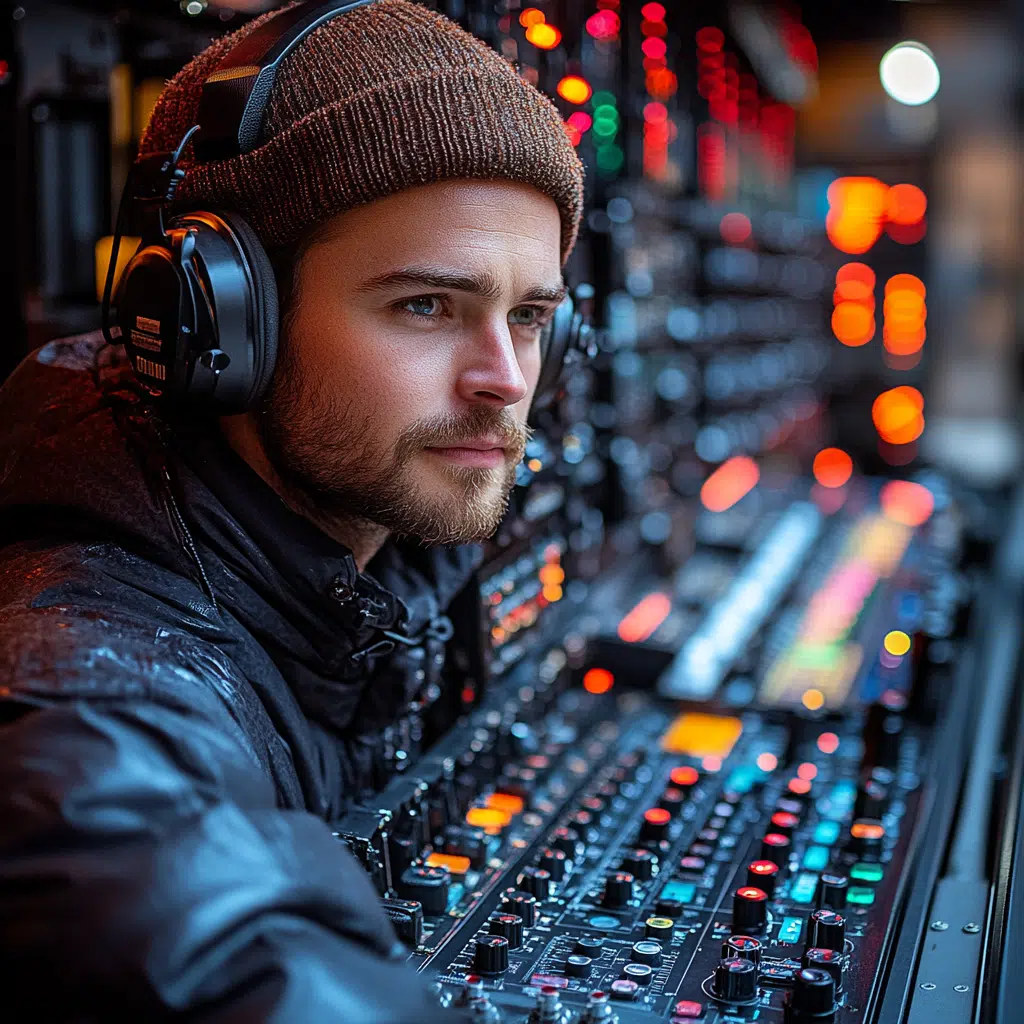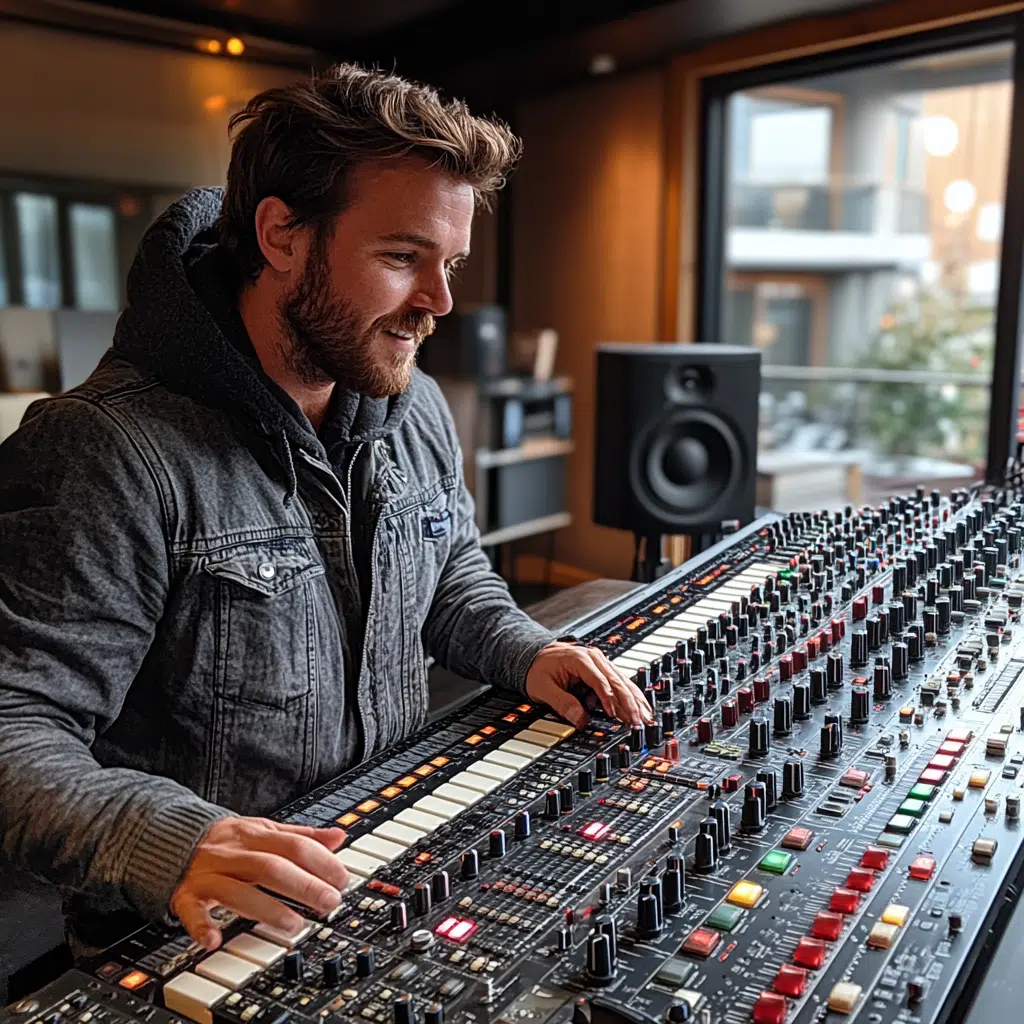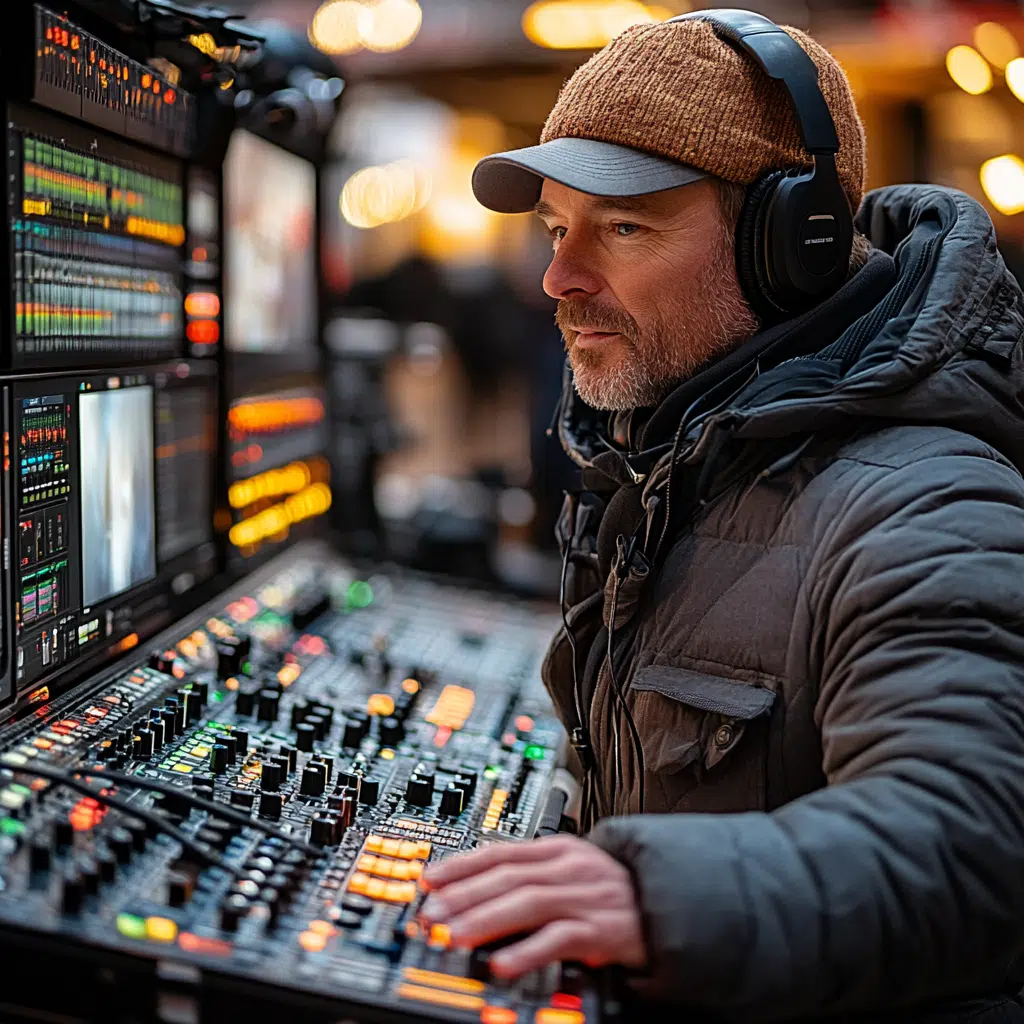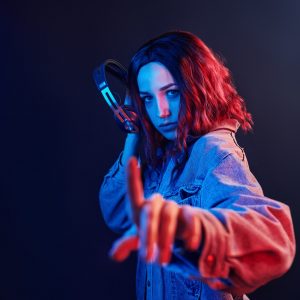In today’s film production landscape, remote mixing for films has become a game-changer, reshaping the entire sound design process. Thanks to technological advances, filmmakers can now achieve cinematic-quality sound without being physically present in a traditional studio. This innovation isn’t just a trend—it’s rapidly becoming an industry standard. By embracing remote solutions, filmmakers and sound engineers share creative spaces without geographical restrictions. Imagine the achievement when the sound captivates as much as the visuals; that’s the magic of remote mixing for films.
Understanding Remote Mixing for Films
Remote mixing isn’t just mixing at a distance; it’s a remarkably different way to produce sound. It involves any process where the audio mixer works separately from the film’s creative team. This approach unlocks a new level of flexibility and collaboration, allowing creators to overcome traditional barriers. Filmmakers don’t need to cluster in one city to achieve stunning audio results. Instead, they reach out across borders, benefiting from global expertise while maintaining a project’s personal touch.
The tools that power remote mixing guarantee that filmmakers don’t compromise on quality. Cutting-edge software allows real-time collaboration, where sound engineers and directors engage in seamless conversations, a harmony often found in a physical studio. These tools enable filmmakers to engage expert talents previously out of reach, enriching every project with diverse auditory perspectives.
The Benefits of Remote Mixing for Films
There’s plenty to admire about remote mixing for films, especially with distinct advantages that echo across projects:
| Aspect | Details |
| Definition | Remote mixing is the audio mixing process conducted when the audio mixer is not physically present with the creative team. |
| Applications | Feature films, TV shows, multimedia projects. |
| Sound Design Elements | Complete sound design, dialogue tapping, Foley creation, ambient sounds, effects, music composition, and final mix delivery. |
| Technology Used | DAWs (Digital Audio Workstations), cloud collaboration tools, real-time streaming software (like Source-Connect), high-speed internet connectivity. |
| Benefits | Geographic flexibility, access to diverse talent pools, potentially lower costs, and reduced travel/logistic expenses. |
| Challenges | Communication barriers, potential for internet connectivity issues, time zone differences affecting collaboration. |
| Cost Range | Typically ranges from $10,000 to $100,000 or more, depending on the project’s size and complexity. |
| Team Involvement | Composers, sound designers, dialogue editors, Foley artists, re-recording mixers. |
| Audio Formats | Multi-channel formats, including stereo, 5.1, 7.1, and immersive formats like Dolby Atmos. |
| Security Measures | Use of secure file transfer protocols, encrypted communications, and access controls to protect sensitive content during remote collaboration and data exchange. |
Challenges of Remote Mixing and How to Overcome Them
Nothing’s entirely smooth sailing, and remote mixing is no exception. However, understanding these challenges leads us to better solutions.
Case Studies: Successful Remote Mixing Projects
Some groundbreaking audio projects have harnessed the power of remote mixing:
Tools and Technologies Enhancing Remote Mixing
Several progressive tools and technologies propel the art of remote mixing forward:
Future of Remote Mixing for Films
The future beckons with advanced innovations like AI-driven audio processing and virtual reality mixing spaces, which hold the promise of transforming sound design for films. Directors will enjoy unprecedented tools for narrative development that synchronizes sound and vision in ways we’ve only dreamed about before. In this shifting era, filmmakers will undoubtedly embrace new technologies that blend traditional craftsmanship with digital advancement.
Embracing the Remote Revolution
Welcoming this shift transforms the creative landscape, bridging the gap between storytellers and global sound design talent. More than just another option, it’s a thrilling opportunity to break boundaries and reimagine sound. Embracing remote mixing, filmmakers craft vibrant, immersive audio experiences that engage audiences as dynamically as their visual counterparts. It’s a revolution calling creators to explore new territories, enriching projects while making them globally accessible. In doing so, storytellers get to capitalize on unmatched opportunities to enhance their projects and connect meaningfully with worldwide audiences.
Remote Mixing for Films: Elevating Sound Quality
The Rise of Remote Mixing
Strap yourself in, folks—Remote Mixing for Films is revolutionizing how we experience movies from a sound perspective. Got your gear? Good. Imagine sitting in your PJs and creating soundscapes that transport audiences to another planet. That’s the magic at play here. Speaking of magic, was that you who heard about the emergence of talented young voice actors in the animated series Makomo Demon slayer? Remote sound capabilities allow such actors from around the globe to collaborate without missing a beat. Now, ain’t that something?
Let’s touch on the growing trend of Online Mixing For Dolby atmos. It’s fast becoming the go-to standard for filmmakers who want to envelop audiences in sound. This cutting-edge technology pushes the envelope, allowing sound to dance around the viewer quite literally. All of this from the comfort of your own home or studio, pushing creative endeavors without the traditional in-person constraints.
Surprising Twists and Turns in Remote Mixing
Remote Mixing for Films isn’t just tech-savvy—it tells a larger story, like how logistics are handled in bustling cities like Mumbai. Ever heard of Remote Sound mixing mumbai studios? They’re fostering new opportunities for collaboration across continents, bringing a fresh perspective to global cinema soundscapes. Nothing short of a technological marvel, indeed.
Oh, and by the way, working remotely isn’t solely limited to mixing—Feeling stuck creatively? You might want to hire a motivational speaker. With the right inspiration, the creative juices can flow, painting wondrous audio landscapes, no matter where you’re mixing from.
Intriguing Side Notes
Remember, the shift toward remote work offers tremendous flexibility and has seen a wider acceptance, not unlike how social influences impact decisions. While we’re chatting, Elly Castles intriguing role in the entertainment industry reminds us that diverse skills contribute to a dynamic production environment. Engaging with varied influences creates unexpected harmonies in film projects.
Last but not least, don’t overlook the emotional toil remote work can take on team dynamics. The loss of friends due to shifting work environments is an understated factor to contemplate. Crafting connections and maintaining them can become harder with distance. Addressing team connections and emotional well-being could significantly improve creativity and output.
Isn’t it fascinating how Remote Mixing for Films is shaping both technology and the human connections behind the scenes? Thanks to evolving tech, we’re in for a sonic adventure that’s as thrilling as a roller coaster ride. Enjoy the trip!
What is remote mixing?
Remote mixing is when you’re mixing audio without being in the same room as the other creative folks involved in a project. Basically, you’re handling all the audio work from a distance, which is great if your team is spread out across different places.
How to become a sound mixer for movies?
To become a sound mixer for movies, you typically need to start with a solid background in audio, either through a degree or hands-on experience. Networking is super important, so getting involved in film projects, internships, and meeting people in the industry can open the right doors. A lot of folks start by assisting established sound mixers before moving up the ranks.
How do you mix home recordings?
Mixing home recordings is all about getting a good balance between levels, panning, and EQ. You should also focus on getting rid of any unwanted noises. It’s helpful to use reference tracks—songs you really like—to compare your mixes against and aim for a similar quality.
How much does it cost to sound mix a film?
Sound mixing a film can be a big investment, ranging from $10,000 to over $100,000. The cost depends on how big and complex the project is. Bigger movies with intricate soundscapes will naturally cost more because they involve a lot of creative and technical work from designing unique sounds to finalizing the audio mix.
What are the three types of audio mixers?
The three types of audio mixers are analog, digital, and powered mixers. Analog mixers give you that classic touch and feel, digital mixers come with modern features like built-in effects and automation, and powered mixers have built-in amplifiers, handy for live sound settings.
What is automation mixing?
Automation mixing is a way to control things like volume, panning, and effects automatically over time. When you’re mixing a track, you can set the software to make these changes at specific points, which is especially useful for creating dynamic mixes that keep changing and evolving.
How much does a film sound mixer make?
A film sound mixer can earn anywhere from $50,000 to over $100,000 a year, depending on their experience, the projects they work on, and whether they freelance or are part of a studio. Those working on bigger films or in bigger markets tend to make more dough.
Who mixes sound for a movie?
The person who mixes sound for a movie is often called a re-recording mixer or dubbing mixer. They’re in charge of balancing dialogue, music, and sound effects to create the final sound mix you hear in the film.
How much do you get paid to make sounds for movies?
Making sounds for movies can pay pretty well, with earnings often ranging from $20,000 to $90,000 a year depending on the complexity of the project and experience. Specializing in a niche can often bump up the pay.
Do I need a mixing board for home recording?
You don’t necessarily need a mixing board for home recording these days. A lot of people are using digital audio workstations (DAWs) to do all their mixing on a computer, which is super convenient and often more cost-effective.
How do I make my mixes sound more professional?
To make your mixes sound more professional, focus on EQ and compression to balance out the tracks, and make sure to use reference tracks so you know what you’re aiming for. It’s also crucial to mix on good monitors or headphones to get an accurate sound picture.
How to learn audio mixing?
Learning audio mixing involves a good mix of practice and theory. Online courses, videos, and books are a great start, but the key is spending time actually playing around with mixing software and learning by doing. Joining a local audio community or finding a mentor can also accelerate your learning.
How much do producers charge for mixing?
Producers’ rates for mixing can vary widely, often from $200 to $1,000 or more per track. The cost depends on their experience, the complexity of the arrangements, and whether any additional services are required, like mastering.
What level of sound mixing for film?
Film sound mixing is the art of combining all the audio elements of a film—dialogue, music, effects—into a cohesive soundtrack. The goal is to balance all these elements so that everything fits together perfectly and enhances the story being told.
How do you become a film sound mixer?
Becoming a film sound mixer often starts with education, either through formal studies in audio engineering or related fields, or through self-teaching. After building a foundational understanding, gaining experience through internships, assistant roles, or working on smaller projects helps build the skills needed for larger film projects.
What does remote mean in music?
In music, “remote” typically refers to working from a different location than where the music is happening. This could mean you’re recording, mixing, or even producing music for someone across the globe thanks to digital technology.
What does remote audio mean?
Remote audio means working with audio from a distance. It’s part of the new wave of working remotely, where you don’t have to be in the same place as the recording or production. You can mix tracks, add effects, or oversee a session from wherever you are.
What is the difference between DJ and live mixing?
The difference between DJ and live mixing mostly comes down to the setting and goals. DJ mixing is about blending tracks seamlessly for a continuous party vibe, often using pre-recorded music, while live mixing involves handling live sound like at a concert or event, ensuring the sound is balanced and clear on the fly.
What’s the difference between recording and mixing?
Recording is about capturing sound, whether it’s vocals, instruments, or any kind of audio onto a medium. Mixing, on the other hand, is the process after recording where you take those tracks and blend them together, adjusting levels, EQ, and effects to create a polished final product.



